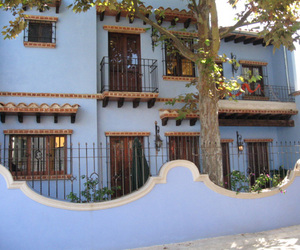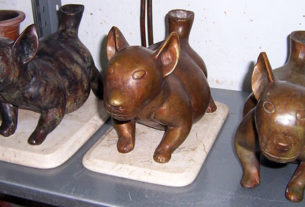When we think of the word trap, we usually think of the small apparatus used to catch mice or something sinister to capture and / or injure a soldier during war. But the traps I want to address in this article are the drain traps in the plumbing of your Mexico house.

© Donald J. MacKay, 2009
A trap is the element in drains that captures a quantity of water to prevent smelly sewer gases from coming up and out the drain. When they don’t work, you can smell the odor of the waste water system. These gases are not only a nuisance. They can be outright dangerous at high concentrations in non-ventilated spaces. Fortunately, here in my part of Mexico, most of the homes are well ventilated and concentrations usually do not reach dangerous levels. Even so, the nuisance smell is enough to cause concerns that are preventable and repairable.
Types of traps in Mexican architecture
The drain traps commonly used are “P traps” and get their name from the shape of the trap and not by the effluent it handles. If you look under your bathroom sink, typically you will see a vertical tube that comes down from the drain hole in the sink and then goes into a semicircular U-shape, which then leads to a horizontal tube into the wall at the back, below the sink. The U-shaped dip in the pipe and the horizontal tube form the shape of the letter “P” lying on its side and hence the name for this type of trap. The key element of the trap is the U-shaped part of the drain and it is important that the bottom of the “U” is lower in elevation than the horizontal element of the drain pipe. It is in this U-shaped section of the drain pipe where the water is “trapped,” preventing the sewer gas from passing through the drain pipe to the sink drain. It should also be noted that even if you put a stopper or plug in the drain hole, there is still an open connection to the drain through the overflow holes along the side of the sink or tub.
A second type of drain is also used in plumbing here in Mexico. This is a “drum trap” or “bell trap.” The typical drum trap is used in floor drains or showers, and will have a removable cover or grate (which you can see) and a truncated or cut-off cone shaped insert, where the wide open end of the cone is at the top (under the cover) and the narrow open end of the truncated cone points downwards (but not touching the bottom) into a cylindrical shaped base. On the side of the base is the horizontal exit for the drain from the trap. The bottom (narrow end) of the cone insert is always lower than the base of the drain on the side of the drum trap. Since the narrow end of the cone is essentially in the water at the base of the drum trap, sewer gases cannot get past the water “trapped” in the drain.
Advantages and disadvantages
An advantage of the drum trap is that generally it is easy to find heavier lost items (like rings or jewelry) in the drain, whereas the U-shape section of the P-trap needs to be removed to find any lost item. Also the drum trap can be opened to be cleaned whereas the P-trap is more difficult to open to clean. However, the P-trap generally cleans itself by having the water flush through the drain every time it is used.
A problem with drum traps, when compared to the P-trap, is that it is easier for the water to evaporate out of the base of the drum trap, allowing the sewer gas out of the drain. Also, a poorly installed or misaligned cone (against the top edges of the drain) can allow sewer gas to escape out the drain.
Both styles of traps are sensitive to non-ventilated plumbing systems, which is a common problem. When the plumbing is not ventilated, the flushing of the toilet can cause backpressure in the drain system that can literally “suck” out the water in the trap (especially a P-trap). And without water, the trap cannot prevent sewer gas from escaping the drain opening. Also, ventilated systems will tend to draw sewer gases away from the drainage system out the stack of the ventilation (typically to the roof level) by chimney effect as breezes travel over the open stack and pull sewer gases away from the drain pipes.
Finally, there is a typical problem with all drains in bathrooms, i.e. sink, shower, toilet and floor drain. When they are not used for a long period of time, the drain traps empty of water due to evaporation and allow the sewer gas to escape. Take time to put water in the drains periodically and remember the floor drain so common in Mexican homes, since it normally doesn’t get regular water flowing through the drain. Why? Because it is installed for emergency drainage of overflowing plumbing fixtures.

